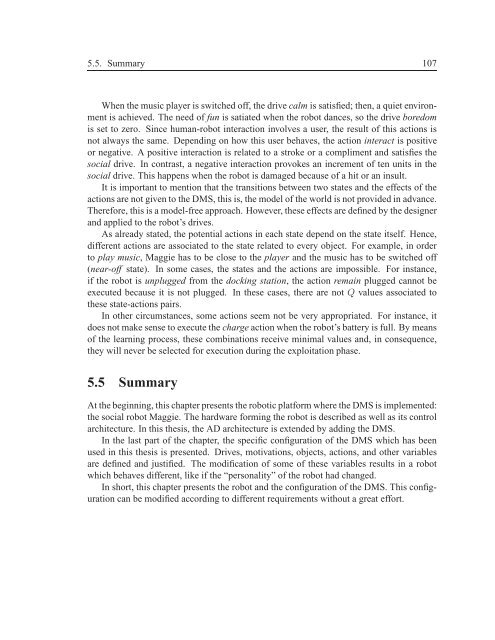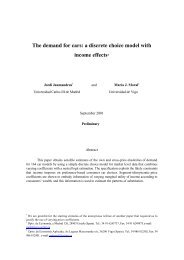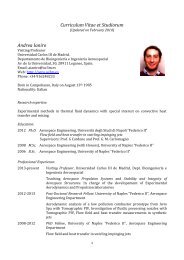TESIS DOCTORAL - Robotics Lab - Universidad Carlos III de Madrid
TESIS DOCTORAL - Robotics Lab - Universidad Carlos III de Madrid
TESIS DOCTORAL - Robotics Lab - Universidad Carlos III de Madrid
You also want an ePaper? Increase the reach of your titles
YUMPU automatically turns print PDFs into web optimized ePapers that Google loves.
5.5. Summary 107When the music player is switched off, the drive calm is satisfied; then, a quiet environmentis achieved. The need of fun is satiated when the robot dances, so the drive boredomis set to zero. Since human-robot interaction involves a user, the result of this actions isnot always the same. Depending on how this user behaves, the action interact is positiveor negative. A positive interaction is related to a stroke or a compliment and satisfies thesocial drive. In contrast, a negative interaction provokes an increment of ten units in thesocial drive. This happens when the robot is damaged because of a hit or an insult.It is important to mention that the transitions between two states and the effects of theactions are not given to the DMS, this is, the mo<strong>de</strong>l of the world is not provi<strong>de</strong>d in advance.Therefore, this is a mo<strong>de</strong>l-free approach. However, these effects are <strong>de</strong>fined by the <strong>de</strong>signerand applied to the robot’s drives.As already stated, the potential actions in each state <strong>de</strong>pend on the state itself. Hence,different actions are associated to the state related to every object. For example, in or<strong>de</strong>rto play music, Maggie has to be close to the player and the music has to be switched off(near-off state). In some cases, the states and the actions are impossible. For instance,if the robot is unplugged from the docking station, the action remain plugged cannot beexecuted because it is not plugged. In these cases, there are not Q values associated tothese state-actions pairs.In other circumstances, some actions seem not be very appropriated. For instance, itdoes not make sense to execute the charge action when the robot’s battery is full. By meansof the learning process, these combinations receive minimal values and, in consequence,they will never be selected for execution during the exploitation phase.5.5 SummaryAt the beginning, this chapter presents the robotic platform where the DMS is implemented:the social robot Maggie. The hardware forming the robot is <strong>de</strong>scribed as well as its controlarchitecture. In this thesis, the AD architecture is exten<strong>de</strong>d by adding the DMS.In the last part of the chapter, the specific configuration of the DMS which has beenused in this thesis is presented. Drives, motivations, objects, actions, and other variablesare <strong>de</strong>fined and justified. The modification of some of these variables results in a robotwhich behaves different, like if the “personality” of the robot had changed.In short, this chapter presents the robot and the configuration of the DMS. This configurationcan be modified according to different requirements without a great effort.






